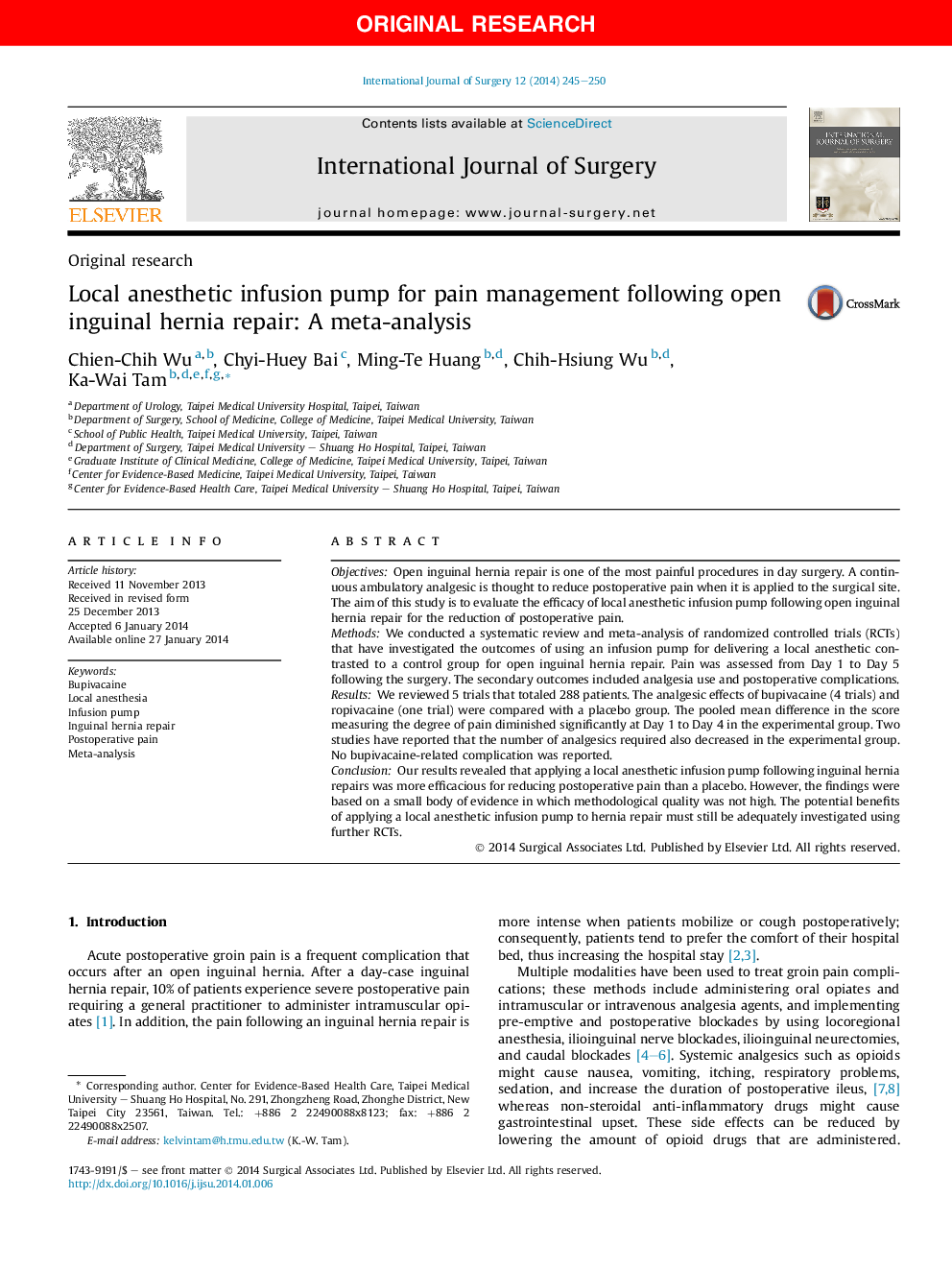| Article ID | Journal | Published Year | Pages | File Type |
|---|---|---|---|---|
| 4286048 | International Journal of Surgery | 2014 | 6 Pages |
ObjectivesOpen inguinal hernia repair is one of the most painful procedures in day surgery. A continuous ambulatory analgesic is thought to reduce postoperative pain when it is applied to the surgical site. The aim of this study is to evaluate the efficacy of local anesthetic infusion pump following open inguinal hernia repair for the reduction of postoperative pain.MethodsWe conducted a systematic review and meta-analysis of randomized controlled trials (RCTs) that have investigated the outcomes of using an infusion pump for delivering a local anesthetic contrasted to a control group for open inguinal hernia repair. Pain was assessed from Day 1 to Day 5 following the surgery. The secondary outcomes included analgesia use and postoperative complications.ResultsWe reviewed 5 trials that totaled 288 patients. The analgesic effects of bupivacaine (4 trials) and ropivacaine (one trial) were compared with a placebo group. The pooled mean difference in the score measuring the degree of pain diminished significantly at Day 1 to Day 4 in the experimental group. Two studies have reported that the number of analgesics required also decreased in the experimental group. No bupivacaine-related complication was reported.ConclusionOur results revealed that applying a local anesthetic infusion pump following inguinal hernia repairs was more efficacious for reducing postoperative pain than a placebo. However, the findings were based on a small body of evidence in which methodological quality was not high. The potential benefits of applying a local anesthetic infusion pump to hernia repair must still be adequately investigated using further RCTs.
